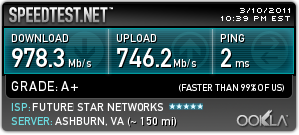In 1994, ABC's World News Now was the first television program to be broadcast over the Internet, using the CU-SeeMe videoconferencing software.
The term IPTV first appeared in 1995 with the founding of Precept Software by Judith Estrin and Bill Carrico. Precept developed an Internet video product named IP/TV. IP/TV was a multicast backbone (MBONE) compatible Windows and Unix-based application that transmitted single and multi-source audio and video traffic, ranging from low to DVD quality, using both unicast and IP multicast Real-time Transport Protocol (RTP) and Real time control protocol (RTCP). The software was written primarily by Steve Casner, Karl Auerbach, and Cha Chee Kuan. Precept was acquired by Cisco Systems in 1998. Cisco retains the IP/TV trademark.
Internet radio company AudioNet started the first continuous live webcasts with content from WFAA-TV in January 1998 and KCTU-LP on January 10, 1998.
Kingston Communications, a regional telecommunications operator in the UK, launched KIT (Kingston Interactive Television), an IPTV over digital subscriber line (DSL) broadband interactive TV service in September 1999 after conducting various TV and video on demand (VoD) trials. The operator added additional VoD service in October 2001 with Yes TV, a VoD content provider. Kingston was one of the first companies in the world to introduce IPTV and IP VoD over ADSL. In 2006, the KIT service was discontinued, subscribers having declined from a peak of 10,000 to 4,000.
In 1999, NBTel (now known as Bell Aliant) was the first to commercially deploy Internet protocol television over DSL in Canada using the Alcatel 7350 DSLAM and middleware created by iMagic TV (owned by NBTel's parent company Bruncor). The service was marketed under the brand VibeVision in New Brunswick, and later expanded into Nova Scotia in early 2000 after the formation of Aliant. iMagic TV was later sold to Alcatel.
In 2002, Sasktel was the second in Canada to commercially deploy Internet Protocol (IP) video over DSL, using the Lucent Stinger DSL platform. In 2006, it was the first North American company to offer high-definition television (HDTV) channels over an IPTV service.
In 2003, Total Access Networks Inc launched an IPTV service, consisting of 100 free IPTV stations worldwide.
In 2005, Bredbandsbolaget launched its IPTV service as the first service provider in Sweden. As of January 2009, they are not the biggest supplier any longer; TeliaSonera, who launched their service later now has more customers.
In 2006, AT&T Inc. launched its U-Verse IPTV service in the United States, comprising a national head end and regional video-serving offices. AT&T offered over 300 channels in 11 cities with more to be added in 2007 and beyond. In March 2009, AT&T announced that U-verse had expanded to 100 or more high-definition channels in every U-Verse TV market. While using Internet protocols, AT&T built a private IP network exclusively for video transport.
The Bell Video Store was a premium Internet video-on-demand service offered by Bell Sympatico in Canada. It began service in May 2007, under a cloud of controversy as Bell Sympatico had just begun throttling internet speeds for its customers.
In 2007, TPG became the first internet service provider in Australia to launch IPTV. Complementary to its ADSL2+ package this was, and still is, free of charge to customers on eligible plans and now offers over 45 local free to air channels and international channels.By 2010, iiNet and Telstra launched IPTV services in conjunction to internet plans but with extra fees.
In 2009, the company ZaapTV™ came out with the IPTV receiver ZaapTV™ HD1009N, a receiver that could bring live channels from all over the world. Successfully now in 2013 (now at its fourth generation model) it is still in the market as one of the leading brands in the industry with streaming of over 1,200 live channels. Its wide success is accredited by the strong impact it has in the United States market.
In 2010, CenturyLink – after acquiring Embarq (2009) and Qwest (2010) – entered five U.S. markets with an IPTV service called Prism.This was after successful test marketing in Florida.
In 2011, TOT (Television Organization of Thailand) Launched IPTV service over its ADSL service. The offering has four tiers of service from a basic platform of free over the air channels in Thai language to a full slate of entertainment packages offering various international satellite networks in Thai, English, French, Korean, Indian and Arabic languages.
In 2013, Vmed launched it's IPTV service over its Cable/DSL service. Currently they offer IPTV within Ontario, Canada with hopes to be able to expand to all over Canada.
In 2013 Hospitality IPTV Ltd launched OTT services for 40 live TV streaming channels throughout Australia and New Zealand under a secure OTT delivery platform as an expansion of hugely successful previous IPTV closed network platforms.










 Reply With Quote
Reply With Quote


Social Networking Bookmarks